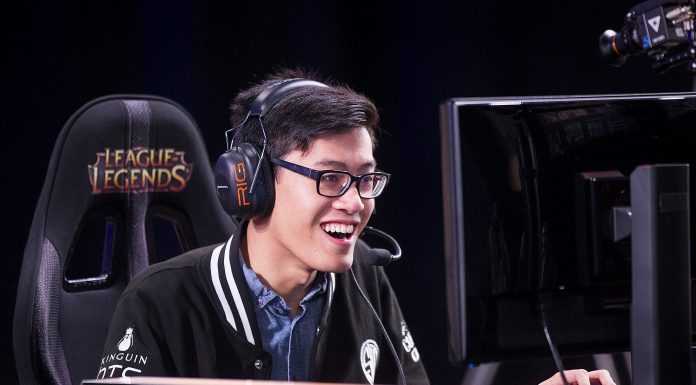The International 2017 is only weeks away, and Valve has treated us to an entire overhaul of the Majors, with the new system launching right after TI7 ends. The 2017 – 2018 competitive season will be unlike anything we’ve seen before in Dota.
Previous Attempts to Rework Majors in Dota 2
For newer players, it’s important to give a short history lesson. For the last two years, Valve has been testing out a Majors system for Dota 2. These were three or four large tournaments each year with huge prize pools — the Boston Major, for example, had a $3,000,000 USD prize pool. Valve has partnered with organizations like PGL to run these tournaments, but they were still very much Valve events.
Fans of professional Dota 2 were concerned about the Major tournament system’s effect on smaller, third party tournaments. We used to have an incredible diverse assortment of third party tournaments, organized by many different companies including ESL and Perfect World. On the good side, we had lots of diversity in the scene and opportunities for various companies to stage large, prestigious events and stimulate the growth of the professional scene. On the downside, the vastly differing quality of tournaments is what let me to write my very first article here at Esports Edition, back in 2015: What Accommodations Should Professional Players Expect?
However, before Valve rolled out the Majors system, tournaments were reaching the oversaturation point. We had matches almost every single week for one tournament or another, and players were clearly getting burnt out from the constant travel and competition.
The unfortunate side effect of the Majors has been the slow death of third-party tournaments. For smaller tournaments, the prize pools suffered. The Summit is a good example of this. Furthermore, Tier 1 teams pulled out of smaller tournaments in favor of bootcamping for the Majors, as placing well at these events could earn teams an invite to The International during the summer.
The 2017 – 2018 Competitive Season
Fear not, Valve has listened. Leading up to The International 8, players will earn points through participation in a variety of tournaments. Valve will be selecting third party tournaments to “directly sponsor” instead of putting on their own Majors, and those sponsored tournaments will be the factor that determines invites to The International 2018.
You May Like
Moving forward, tournaments will be divided into Majors and Minors, and the organizers of Majors will need to cough up a prize pool of at least $500,000. Valve will also throw in an additional $500,000 as part of the sponsorship. For Minors, organizers will need to ensure that there’s a minimum prize pool of $150,000, and then Valve will kick in an additional $150,000.
Majors and Minors must have a qualifier for each of the six primary regions in Dota: NA, SA, SEA, CN, EU, and CIS. THIS. IS. HUGE. In the past, NA and SA were not separated, and this severely stunted the growth of teams in South America. They weren’t quite able to compete on the same level as most North American teams, which meant players from the region rarely got the opportunity to attend LANs and learn from playing against the best teams in the world. The CIS and EU regions had too many tier 1 teams, and fan-favorites would have to sit tournaments out as there were not enough qualifier slots.
With the addition of the SA and CIS regions to TI7 and the announcement for the 2018 competitive season, it seems like Valve is taking the South American scene seriously as well as trying to ensure that top players from the EU and CIS regions are able to participate in the biggest tournaments.
Earning a Place in the Spotlight
Players will receive Qualifying Points for their participation in the Major and Minor tournaments. Majors give out more points, Minors give out fewer. The Qualifying Points will be available year-round to help fans keep track of which teams–and players–are able to perform consistently.
Transparency For Direct Invites To The International
The way direct invites for TI are determined has always been shrouded in a bit of mystery, although community members like Nahaz have been somewhat successful at decoding the process.
We know that Valve uses previous tournament results to decide who gets an invite to The International, but there are typically a few surprise invites and, at the end of the day, the entire system just wasn’t transparent. In the 2017 – 2018 competitive season, points earned by players will be the sole factor for determining who’s able to skip the qualifiers and proceed directly to TI8. This should quell the outpouring of rage from butthurt fans when their team doesn’t get the invite they believed they deserved. Maybe.
A Change for the Better
I can’t stress enough how huge the change from four to six Regions will be. South American teams hardly ever get to represent their countries on the biggest stages in Dota, and missing out on the opportunity to learn from champions has, unfortunately, stunted the growth of the scene. The CIS region have always had to jump in to an already overcrowded pool of excellent teams in order to qualify, but now, they’ve got a chance to establish themselves as a separate entity from the rest of Europe and Asia.
Personally, I’m looking forward to keeping track of my favorite players and teams with the new Qualifying Points system. It means we won’t be waiting with baited breath to see the Direct Invite reveals, but at least there’s transparency, which means that Valve can’t be accused of favoritism.
The 2018 Competitive Season starts August 14th and hopefully will be an improvement to the existing Majors system. You can read the official announcement from Valve here.
















